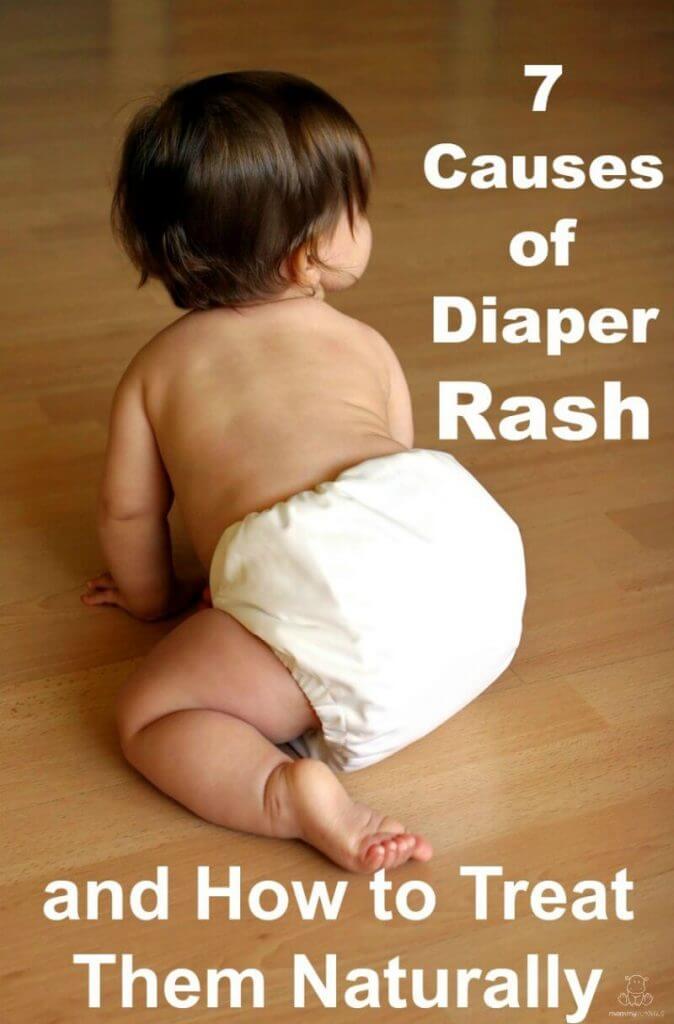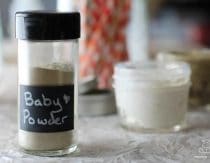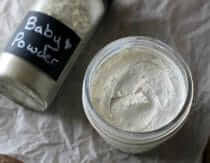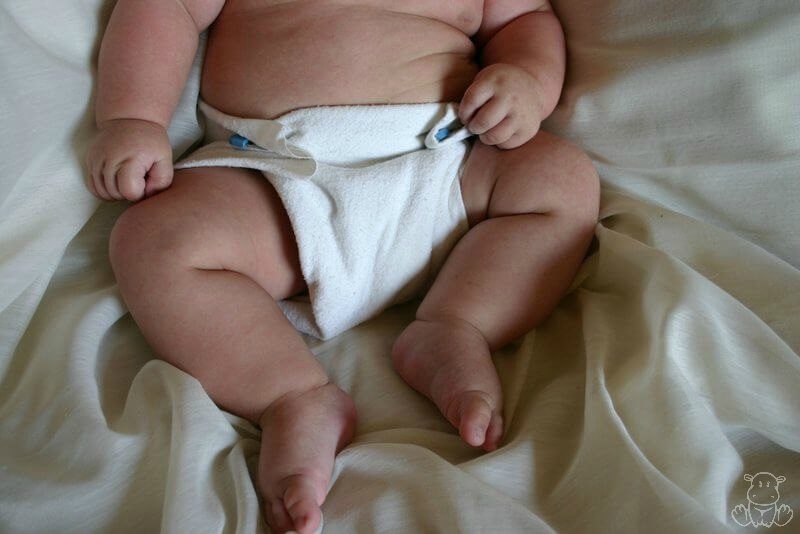
Eat. Sleep. Pee. Poop. Repeat. It’s a pretty smooth system . . . for babies anyway! For new mamas and papas there are usually a **few** more things involved, like:
- Learning to eat everything cold with one hand
- Waking up from a sleep coma only to realize you left the car running in the driveway
- Perfecting the art of hip healthy swaddling
- Decoding diaper rash
That last one can be especially tricky, given that there are lots of possible causes of diaper rash. Today I’ll explain how to identify some of the most common culprits, plus diaper rash treatments that can help in each situation. Before we do that, though, let’s take a look at some lifestyle changes that help with diaper rash regardless of the cause.
- Diaper Rash Treatment & Prevention Tips (Any Cause)
- 7 Common Diaper Rash Causes & What To Do
- Cause #1: Infrequent Diaper Changes
- Cause #2: Diaper Rash and Yeast
- Cause #3: Diaper Rash From Teething Or Illness
- Cause #4: New Foods, Food Sensitivities & Allergic Reactions to Foods
- Cause #5: Baby Wipes, Diaper Type, Detergents And/Or Fabrics
- Cause #6: Bacterial Infection
- #7: Gut Imbalance
- Home Remedies for Diaper Rash (Mama-Tested & Research-Backed)
- When To See a Pediatrician
Diaper Rash Treatment & Prevention Tips (Any Cause) ^
- Frequent diaper changes – Allow baby’s skin to air dry before putting a diaper on or gently pat dry. Avoid rubbing the skin, which can cause irritation or chafing.
- Wash your hands before and after each diaper change – If the skin is weakened or broken in any areas, it’s more vulnerable to infection from bacteria on your hands. If the cause of the rash is bacteria or yeast, washing afterwards can help prevent the organisms from spreading to other parts of the body.
- Avoid wipes that contain alcohol or fragrance – A clean washcloth and plain warm water often works best. If you want to use a cleanser, opt for a gentle soap like this one.
- Opt for diaper-free time when possible – If the weather is warm, spending some time outside is a great option. Otherwise time indoors on a floor that’s easy to clean will work. Fresh air tends to help speed healing.
- When wearing a diaper is necessary, use a barrier cream – This protect irritated skin from moisture. Recipes and links to store-bought options can be found below.
7 Common Diaper Rash Causes & What To Do ^
According to the American Academy of Pediatrics textbook of pediatric care, diaper rash has two main types:
- Those that “primarily affect the diaper area and are related to wearing a diaper.”
- And those that “are associated with systemic disorders that may involve the perineum,” also known as the baby’s bottom and surrounding area.
It’s super common and – according to the Mayo clinic – can usually be successfully treated at home. (1) Here are eight ways diapers (and other external factors) and systemic factors can contribute to skin irritation.
Cause #1: Infrequent Diaper Changes ^
Before becoming a parent I was sure I’d never miss a change, but yeah, it happened. Sometimes I left the house for a “quick” errand which took much longer than expected, only to get stranded with less-than-adequate supplies. Other times I just missed the signal that a change was needed.
Once I was so excited to get my daughter out for some much-needed park time after the birth of her little brother that I, uh, didn’t notice the funny poop face he made AS SOON AS I put a brand new diaper on him. (Incidentally, I may also not have noticed that my little girl was wearing two right shoes.)
According to a study found in the American Academy of Pediatrics publication, Pediatrics in Review, when the average number of diaper changes per day is eight or more it significantly lowers both the frequency and severity of diaper rash.
Fortunately in my case these occasional oversights rarely resulted in irritation, but when they did it was a very simple fix: more frequent diaper changes and the diaper rash treatments in this post.
Rash Features
Very often, the distinguishing feature of this kind of rash is that it doesn’t show up in skin folds/creases where wetness can’t reach. The skin is usually flat, red and irritated, and may sometimes peel. However, the appearance of the rash can vary from baby to baby.
Things That May Help
This one’s easy – just follow the five essential treatment tips above.
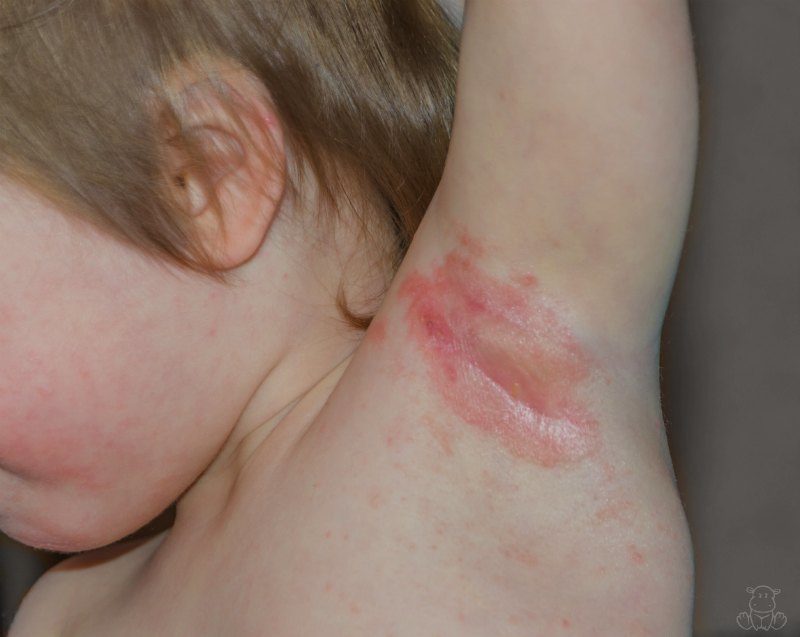
Cause #2: Diaper Rash and Yeast ^
Yeast infection caused by Candida albicans is one of the most common causes of diaper rash. According to the Mayo Clinic:
Antibiotics kill bacteria — the good kinds as well as the bad. When a baby takes antibiotics, bacteria that keep yeast growth in check may be depleted, resulting in diaper rash due to yeast infection. Antibiotic use also increases the risk of diarrhea. Breast-fed babies whose mothers take antibiotics are also at increased risk of diaper rash.” (1)
Unfortunately, most of us have had more than a few rounds of antibiotics growing up and we may pass on these imbalances via the birthing process. Did you have any idea? I certainly didn’t when my first child was born. I have since learned that there are things we can do to increase the quality of the gut microbiota they receive from us, but we all do the best we can with the information we have at the time.
Antibiotics administered during birth can have the same effect as antibiotics administered directly to baby or indirectly via mom while she is breastfeeding. When overgrowth in babies occurs it can sometimes lead to diaper rush, other times thrush, and sometimes both.
Yeast Rash Features
Yeasty rashes may have red bumps or pustules that look like pimples. According to Stanford Children’s Health, it “usually begins in the creases or folds of the thighs and in the diaper area, and then spreads. The rash is usually a deep red, shiny rash with red, satellite lesions. This type of rash may be associated with thrush, a yeast infection in the baby’s mouth.” (2)
Yeast Diaper Rash: Things That May Help
- Avoid cornstarch if a yeast infection is suspected – It can feed the yeast and perpetuate the rash.
- Probiotics – Look for one specially formulated for babies
- Apply unsweetened yogurt as you would diaper cream – Make sure skin is dry before application. Start by applying at every change, then spread out applications as needed.
- Apple cider vinegar – According to Medical News Today, adding a cup of apple cider vinegar to a toddler’s bath water can help with yeast rashes
- Tea tree essential oil diluted in coconut oil – Many parents report success with applying 5 drops tea tree oil mixed with 2 tablespoons of coconut oil. Notes: Do not apply undiluted tea tree oil to irritated skin – it will burn!
Preventing Yeast Reinfection
According to this post, “Yeast bacteria can live up to 5 days on baby’s skin and clothes even after the rash has cleared. Be sure to disinfect baby’s diapers, clothes, and sheets in between uses and up to 5 days after the rash has cleared to prevent reoccurrence.” Here are some ideas for disinfecting your laundry:
- Diaper Stripping – If you use cloth diapers you may need to strip them. Here’s how to do that – some suggestions are greener than others.
- Oxygen Bleach such as OxiClean Free – “Oxygenated Bleaches/Non Chlorine Bleach (Sodium Percarbonate): is effective against bacteria and fungal yeast, and can be used at lower temperatures but is considered ” more effective when used in hot water 130º F.”(1) Concentrations for effective disinfecting are not documented. Some oxygenated bleaches are loaded with other additives. We suggest you read your labels well and find one without fillers and fragrance and that has a high percentage of Sodium Percarbonate.” (3)
- Sun – Exposing your dipes to sunlight will help with the disinfection process.
- Bleach – If your dipes continue to cause issues chlorine bleach may be a last resort. Here’s how to use it.
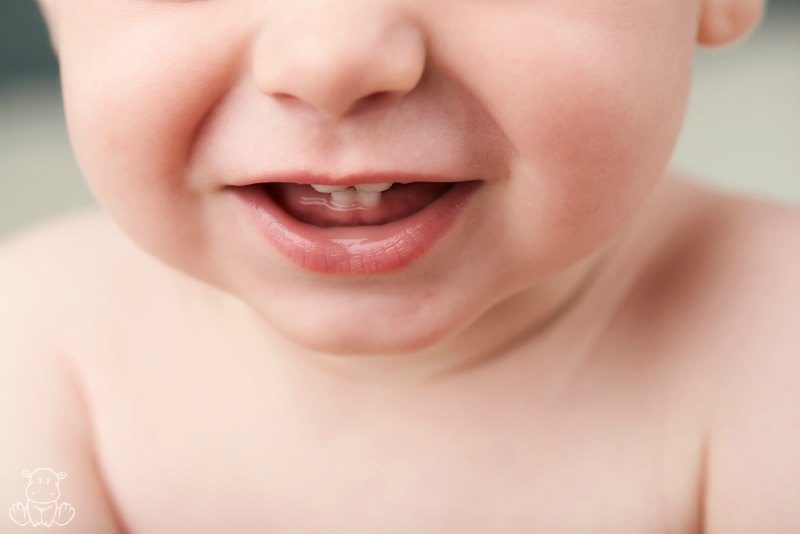
Cause #3: Diaper Rash From Teething Or Illness ^
Though we’re not exactly sure why, diarrhea sometimes accompanies teething. Some people think it’s because babies drool more when teething, and swallowing excessive drool loosens the bowels. Illness is another factor that can lead to diarrhea. Whatever the cause, diarrhea sometimes happens, and it can irritate baby’s skin and lead to a rash.
Teething or Illness Rash Features
Varies.
Things That May Help
Comfort measures for teething may reduce drooling, which may in turn ease diarrhea
Cause #4: New Foods, Food Sensitivities & Allergic Reactions to Foods ^
The most common age for babies to get diaper rash is 9-12 months, which is probably because babies are increasing solid food intake around this age. (4)
Acidic foods like tomato and citrus can cause irritation, as can foods to which the baby is sensitive or allergic. If baby is breastfed, certain foods consumed by mama can also cause irritation.
Food-Related Rash Features
May look like a red ring around baby’s anus. However, the appearance can vary from baby to baby.
Things That May Help
Remove suspected foods from the diet. For more information on food sensitivities, check out Gut & Psychology Syndrome.
Cause #5: Baby Wipes, Diaper Type, Detergents And/Or Fabrics ^
If you’re using cloth diapers, leftover detergent residue and/or the chemicals in detergents and fabric softeners can be irritating to baby’s skin. Other possible culprits are the type of fabric used and/or baby wipes, bath products and creams.
When using disposable diapers, rashes can result from an allergic reaction to the gel commonly used to soak up liquid or another material. Even when the same diaper brand has been used for awhile, this is a possibility to consider for two reasons:
- Sensitization (becoming sensitive to a particular substance) can occur over a period of time, so the reaction might not show up right away
- Manufacturers sometimes change materials and/or suppliers, so even if the diapers look the same something may have changed.
External Irritant Rash Features
Varies.
Things That May Help
- Use a natural laundry detergent
- If you use cloth diapers you may need to strip them. Here’s how to do that – some suggestions are greener than others. Consider switching to disposables temporarily until the cloth diapers have been thoroughly sanitized.
- If you’re using disposable diapers or wipes, consider trying a new brand.
Cause #6: Bacterial Infection ^
Sometimes a regular ole rash can become vulnerable to bacteria, which of course love warm, moist environments like diapers. According to the Mayo Clinic:
What begins as a simple skin infection may spread to the surrounding region. The area covered by a diaper — buttocks, thighs and genitals — is especially vulnerable because it’s warm and moist, making a perfect breeding ground for bacteria and yeast. These rashes can be found within the creases of the skin, and there may be red dots scattered around the creases.” (1)
Bacterial Rash Features
Varies. May possibly have pus, raw skin, red dots or raised patches that ooze.
Impetigo, which is caused by bacteria, has some unique features. “Impetigo is a bacterial infection that can develop in the diaper area, as well as other areas of the body. It is usually caused by bacteria that normally live on the skin; infection can develop when there is a break in the skin. Signs of impetigo include tiny (1 to 2 millimeter) raised yellow fluid-filled areas and honey-colored crusted lesions; the lesions may be itchy and/or painful.” (5)
Things That May Help
Tea tree oil diluted in coconut oil. Many parents report success with applying 5 drops tea tree oil mixed with 2 tablespoons of coconut oil. Notes: Do not apply undiluted tea tree oil to irritated skin – it will burn!
#7: Gut Imbalance ^
Gut flora imbalances can lead to diaper rash, eczema, psoriasis and other conditions. (5) Diarrhea, which can be the result of a gut imbalance, can be a cause in many cases.
Gut imbalances may be related to yeast overgrowth or another organism. Identifying them may require the help of a qualified health care professional.
Things That May Help
- Seeking the guidance of a qualified healthcare provider to correct the imbalance
- Probiotics specially formulated for babies
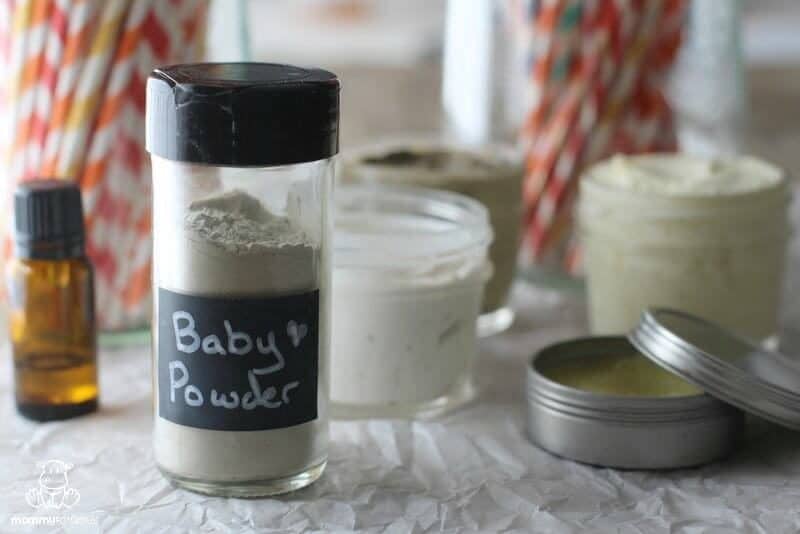
Home Remedies for Diaper Rash (Mama-Tested & Research-Backed) ^
Below are my five favorite home remedies for diaper rash. I’ve included a variety of recipe options so that you can use what’s already in your pantry and/or ingredients you can find locally when possible.
Each one is super easy to make and free of petroleum jelly, dimethicone, mineral oil and other ingredients often found in commercial formulas. If you don’t want to DIY, you’ll also find some some natural pre-made recommendations at the bottom of the post.
Important note on using barrier creams: Make sure to completely dry the area before you apply the barrier cream. Wiping with a warm, soft washcloth or a dampened soft paper towel is less irritating than prepackaged wipes. If the area is really irritated, use a squirt bottle and gently rinse away the mess over the sink or bathtub.
To help heal the skin: Clean with a mild natural soap, then soak the area in plain lukewarm bath water with 1/2 cup of epsom salt for 10-15 min at night. After the bath pat the area dry and apply diaper cream if needed. The magnesium sulfate can help soothe the rash within minutes. Can be done once or twice a week.
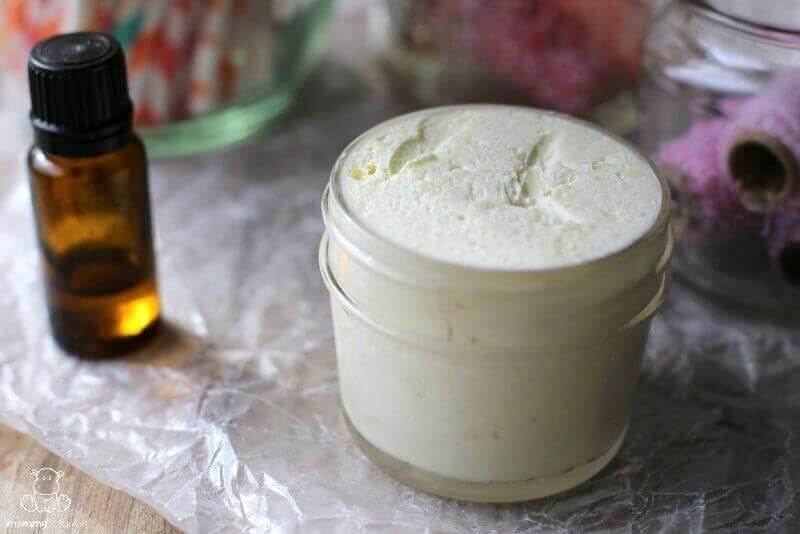
Tallow Balm for Diaper Rash
This stuff is so versatile – it can be used for for dry/chapped skin, diaper rash, and sunburns, and eczema, or as an amazing daily moisturizer for the face and body. To use, apply a thin layer of balm and then follow with my homemade baby powder to create a protective moisture barrier.
You can make your own tallow balm with this recipe, or buy pre-made tallow balm here. As discussed in this post on safe essential oils for children, a dilution ratio of 0.25% is recommended for babies under two. My friend Emilie (who makes the pre-made tallow balm) sells a 1% dilution which is perfect for older children and face/body care, but for babies I’d opt for her unscented version. My tallow balm tutorial includes instructions for a baby-appropriate dilution.
Where to buy pre-made tallow balm: My friend Emilie sells pre-made tallow balm that’s made from pastured tallow. I recommend using the unscented version as a bottom balm. If you want to try it out, click here and use MOMMYPOTAMUS at checkout for 10% off your first order.
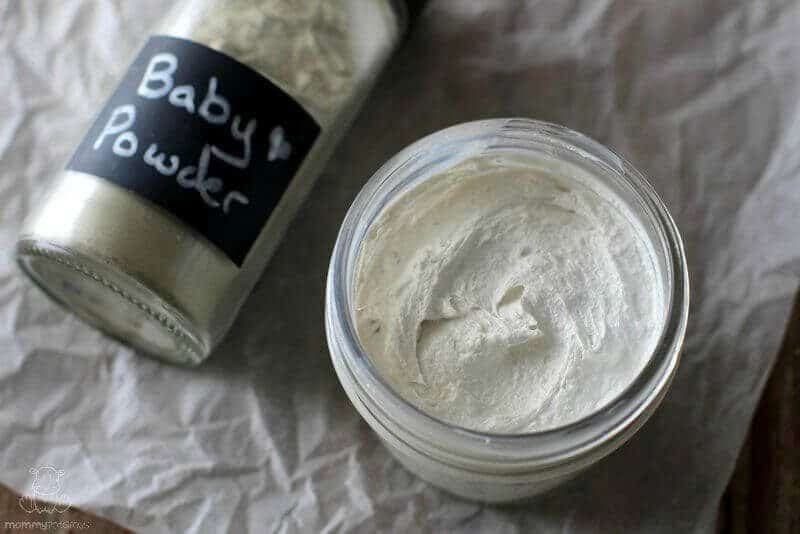
Homemade Diaper Rash Cream With Zinc Oxide
Infused with zinc oxide – which is the therapeutic ingredient in Desitin – this homemade diaper rash cream provides a protective barrier while soothing irritated tushies. However, unlike its popular commercial counterpart, it doesn’t contain ingredients like petrolatum and “fragrance,” which often includes hormone disrupting phthalates.
Where to buy a pre-made option: This cream is made with clean ingredients.
Diaper Cream Recipe With Bentonite Clay
In one study, babies whose diaper rash was treated with hydrated bentonite clay improved seven times faster within six hours of application than those who were treated with calendula cream. Here’s the clay diaper rash cream recipe I use.
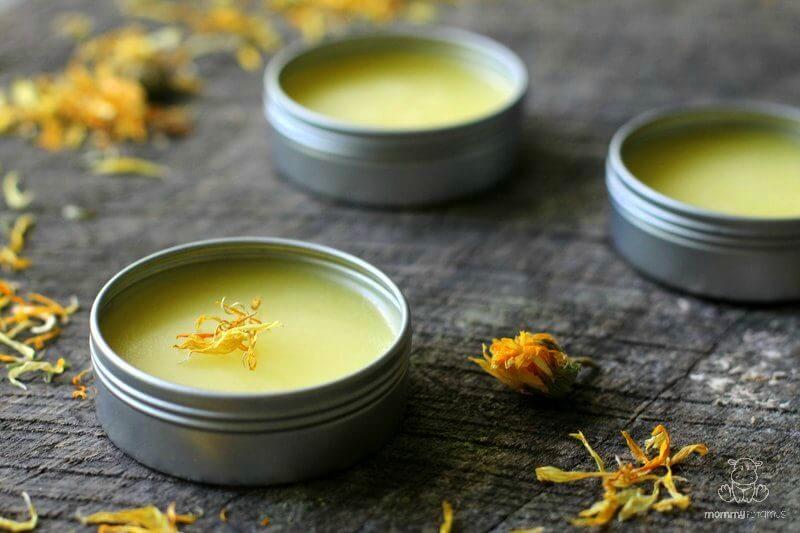
Calendula Salve for Diaper Rash
Although it didn’t perform as well as clay, calendula has been shown to support healing from diaper rash. (source) To incorporate the benefits of clay, apply and top with homemade clay baby powder (recipe below). I keep this Calendula “Everything” Balm on hand because it also works as a face moisturizer, chapped-lip balm, owie salve, burn salve, bug bite balm, and more. Here’s my calendula salve recipe.
Where to buy a pre-made option: I like this one. Another good choice is witch hazel salve.
Homemade Baby Powder Recipe
Hydrated bentonite clay has been shown to improve diaper rash “seven times faster within six hours of application than those who were treated with calendula cream.” I’ve found that it’s the key factor in supporting skin healing, but rather than mixing it with water I prefer to use a soothing balm and then hydrate the clay by allowing it to absorb some of the moisture from the balm. It’s super easy to make into homemade baby powder, and affordable, too!
When To See a Pediatrician ^
According to the Mayo Clinic, you should see a doctor if “your baby’s skin doesn’t improve after a few days of home treatment, talk with your doctor. Sometimes, you’ll need a prescription medication to treat diaper rash.
Have your child examined if the rash:
- Is severe or unusual
- Gets worse despite home treatment
- Bleeds, itches or oozes
- Causes burning or pain with urination or a bowel movement
- Is accompanied by a fever” (1)
- If the skin under the rash seems to be swollen, abnormally hard or tender, as this might be a sign of an infection.
Products Mentioned In This Post
Have you tried a home remedy for diaper rash? What worked for you?
This article was medically reviewed by Madiha Saeed, MD, a board certified family physician. As always, this is not personal medical advice and we recommend that you talk with your doctor.
Want more research-backed natural remedies?
No problem, I’ve created a free ebook for you – Kitchen Apothecary: 25+ Natural Remedies Using Ingredients From Your Pantry – as a gift for signing up for my newsletter. You’ll also get updates when I post about safe essential oils for pregnant/breastfeeding mamas, exclusive gifts and coupons (I was able to give away a jar of free coconut oil to anyone who wanted it recently!), plus other goodies.
Sign up using the form below.
Sources:
1. Mayo Clinic. Diaper Rash.
2. Stanford Children’s Health. Diaper Dermatitis.
3. Pinstripes and Polka Dots. Yeast infection vs. Cloth Diapering.
4. Srisupalak Singalavanija, Ilona J. Frieden (1995) Diaper Dermatitis.
5. Horii, Kimberley A. Patient education: Diaper rash in infants and children (Beyond the Basics).
6. Panahi, Yunes et. al. (2012) A Randomized Comparative Trial on the Therapeutic Efficacy of Topical Aloe vera and Calendula officinalis on Diaper Dermatitis in Children.
7. Campbell-McBride M.D. (2010) Natasha. Gut & Psychology Syndrome.
